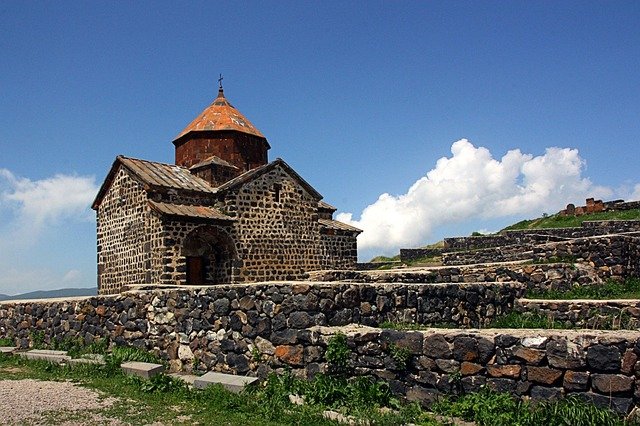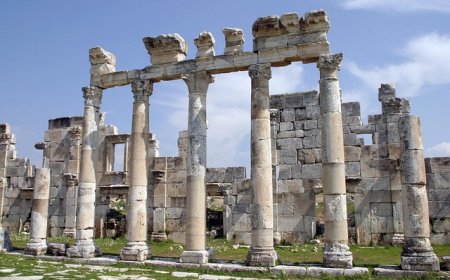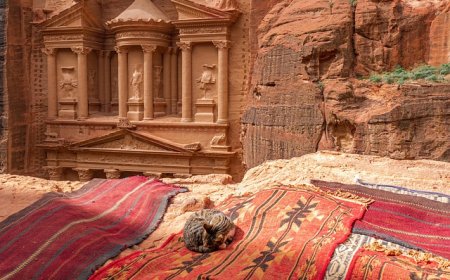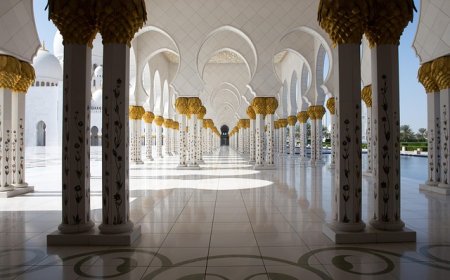Armenia for Students: Geography, Culture, and History in the Caucasus
Learn about Armenia’s mountains, churches, and culture in this student-friendly article with vocabulary and quiz

Armenia: Mountains, Monasteries, and Ancient Traditions
Introduction
Armenia is a small, landlocked country in the South Caucasus, where Europe meets Asia. It is known for its ancient churches, beautiful mountains, and one of the oldest cultures in the world. Armenia was the first country to adopt Christianity as a state religion, and its traditions have remained strong for over 1,700 years.
Today, Armenia is a proud nation that celebrates its heritage through music, food, and festivals.
Geography and Landscape
Armenia is surrounded by Georgia, Azerbaijan, Iran, and Turkey. Most of the country is covered by mountains and high plateaus.
One of the most famous landmarks is Mount Ararat, which lies just across the border in Turkey but remains a powerful symbol of Armenian identity and can be seen from the capital.
The Ararat Plain is the country’s most fertile region, where grapes, apricots, and grains grow. Rivers like the Hrazdan and Aras flow through its valleys.
Armenia has a continental climate, with hot summers and cold, snowy winters. The landscape is dotted with forests, rocky hills, and volcanic peaks.
Cities and Regions
The capital city, Yerevan, is one of the oldest continuously inhabited cities in the world—founded in 782 BCE, older than Rome! Today, Yerevan is a vibrant capital with museums, “pink stone” buildings, and busy cafés.
Other important cities include:
- Gyumri – known for its artists and historic architecture
- Vanadzor – a center for industry and education
- Etchmiadzin – the spiritual heart of the Armenian Apostolic Church
Many villages still preserve traditional crafts, music, and ways of life.
People, Language, and Culture
Armenia has around 3 million people, almost all of whom are ethnic Armenians. The main language is Armenian, which has its own alphabet created in the 400s CE.
Christianity is central to Armenian identity, and the country is home to many ancient stone monasteries and churches. One of the most important sites is Khor Virap, near the foot of Mount Ararat.
Cultural traditions include:
- Duduk music – played on a traditional wooden flute
- Lavash – a thin flatbread baked in clay ovens
- Folk dances – performed at festivals and weddings
Family and community are very important, and hospitality is a way of life.
Food and Daily Life
Armenian cuisine features fresh vegetables, grains, herbs, meat dishes, and cheeses.
Popular dishes include:
- Khorovats – barbecued meat often served at gatherings
- Dolma – grape leaves stuffed with rice and meat
- Harissa – a porridge made with wheat and chicken
- Gata – a sweet pastry served during celebrations
People drink herbal teas and mineral water from natural springs. Meals are shared with family and guests, and toasting is part of the tradition.
Children start school at age 6, studying Armenian, math, science, history, and often Russian or English. Education is free and highly valued.
History of Armenia
Armenia is one of the oldest countries in the world. Over 3,000 years ago, the Kingdom of Urartu ruled the region. In 301 CE, Armenia became the first nation to adopt Christianity as its state religion.
Over centuries, Armenia was invaded by Romans, Persians, Arabs, Mongols, and Ottomans. In the early 1900s, during World War I, many Armenians died or were forced to leave their homeland in the event known as the Armenian Genocide.
After being part of the Soviet Union, Armenia regained independence in 1991. Since then, the country has worked to rebuild, develop its economy, and share its culture with the world.
Nature and Wildlife
Armenia’s mountains and forests are home to:
- Brown bears
- Leopards
- Bezoar goats
- Golden eagles
Lake Sevan, the largest lake in the Caucasus, is a popular spot for swimming, fishing, and protecting rare species.
Vocabulary List
| Word | Definition |
|---|---|
| Caucasus | A region of mountains between Europe and Asia |
| Mount Ararat | A famous peak and symbol of Armenia |
| Khorovats | Armenian barbecued meat |
| Lavash | Thin flatbread baked in clay ovens |
| Duduk | A wooden flute used in Armenian music |
| Genocide | The killing of a large group of people |
| Monastery | A religious community where monks live and pray |
| Independence | Freedom from being ruled by another country |
Kid-Friendly Summary
Armenia is a country of tall mountains and ancient stone churches. People speak Armenian, enjoy dishes like barbecued meat and flatbread, and celebrate with music on the duduk. From the ancient city of Yerevan to the shores of Lake Sevan, Armenia’s history and traditions shine through every part of life.




















































